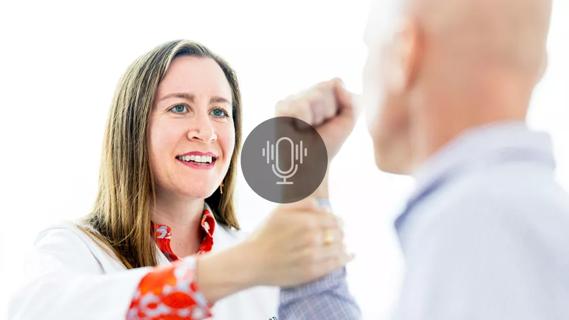Advertisement
Learnings on cost-effectiveness, working with municipalities and more
“Even 15 minutes can be the difference in a patient’s ability to walk after a stroke,” says Andrew Russman, DO, Medical Director of the Comprehensive Stroke Center and Mobile Stroke Treatment Unit in Cleveland Clinic’s Cerebrovascular Center. “And the time savings significantly reduces hospital mortality after acute ischemic stroke.”
Advertisement
Cleveland Clinic is a non-profit academic medical center. Advertising on our site helps support our mission. We do not endorse non-Cleveland Clinic products or services. Policy
Cleveland Clinic’s mobile stroke unit was one of the first in the U.S., launched in 2014. As an early adopter, Dr. Russman shares insights on mobile stroke care in the newest episode of Cleveland Clinic’s Neuro Pathways podcast. Topics he discusses include:
Click the podcast player above to listen to the episode now, or read on for a short edited excerpt. Check out more Neuro Pathways episodes at clevelandclinic.org/neuropodcast or wherever you get your podcasts.
Dr. Russman: The Mobile Stroke Treatment Unit has a dedicated team that includes a critical care nurse, paramedic, emergency medical technician, CT technologist and, through a two-way audio-visual connection, a vascular neurologist. This team is essential to the operation of the unit, and it works with local emergency medical services (EMS) and the local EMS dispatch system.
Advertisement
When a patient calls 911, the dispatcher identifies that the patient is having stroke symptoms. Then they dispatch both the Mobile Stroke Treatment Unit and the local EMS unit to the patient’s location. The first responders (the local EMS unit) go into the home, identify the patient and the stroke symptoms, and then wave in members of the mobile stroke unit waiting at the patient’s doorstep. At that point, the patient is taken from the home and loaded onto the mobile stroke unit.
The first thing we do is work on getting IV access. We also obtain a noncontrast CT scan of the brain and complete a neurologic assessment using the National Institutes of Health Stroke Scale. A clinical decision is made after viewing the CT imaging, seeing the clinical exam and determining whether the patient is a candidate for thrombolysis (with IV tissue plasminogen activator) or has a potential large-vessel occlusion.
Our plan is to take the patient to a facility within their existing system of care, but it needs to be a hospital with the right capability. Patients with large blood vessel occlusions are taken to facilities able to perform endovascular therapy and retrieve the clot.
A lot of collaboration is involved. We work with local EMS and fire departments. We work with teams in emergency departments, and we work together within our own team to optimize these processes, share information with our partners and continue to improve our performance to provide the best clinical outcome for patients.
Advertisement

It’s time to get familiar with this emerging demyelinating disorder

An overview of associated antibodies, therapies for antibody-positive disease and the outlook for atypical forms of MG

A close look at the growing array of options for episodic and chronic migraine

Heightened awareness of this rare disorder may lead to better diagnosis and treatment progress

Insights on the decision process for selecting a treatment approach

New oncologic rehab program is tailored to managing the effects of cancer and its treatments

Determining the right dose and injecting in the right muscle can be challenging

New research sheds light on a potentially devastating condition that is reversible when properly managed